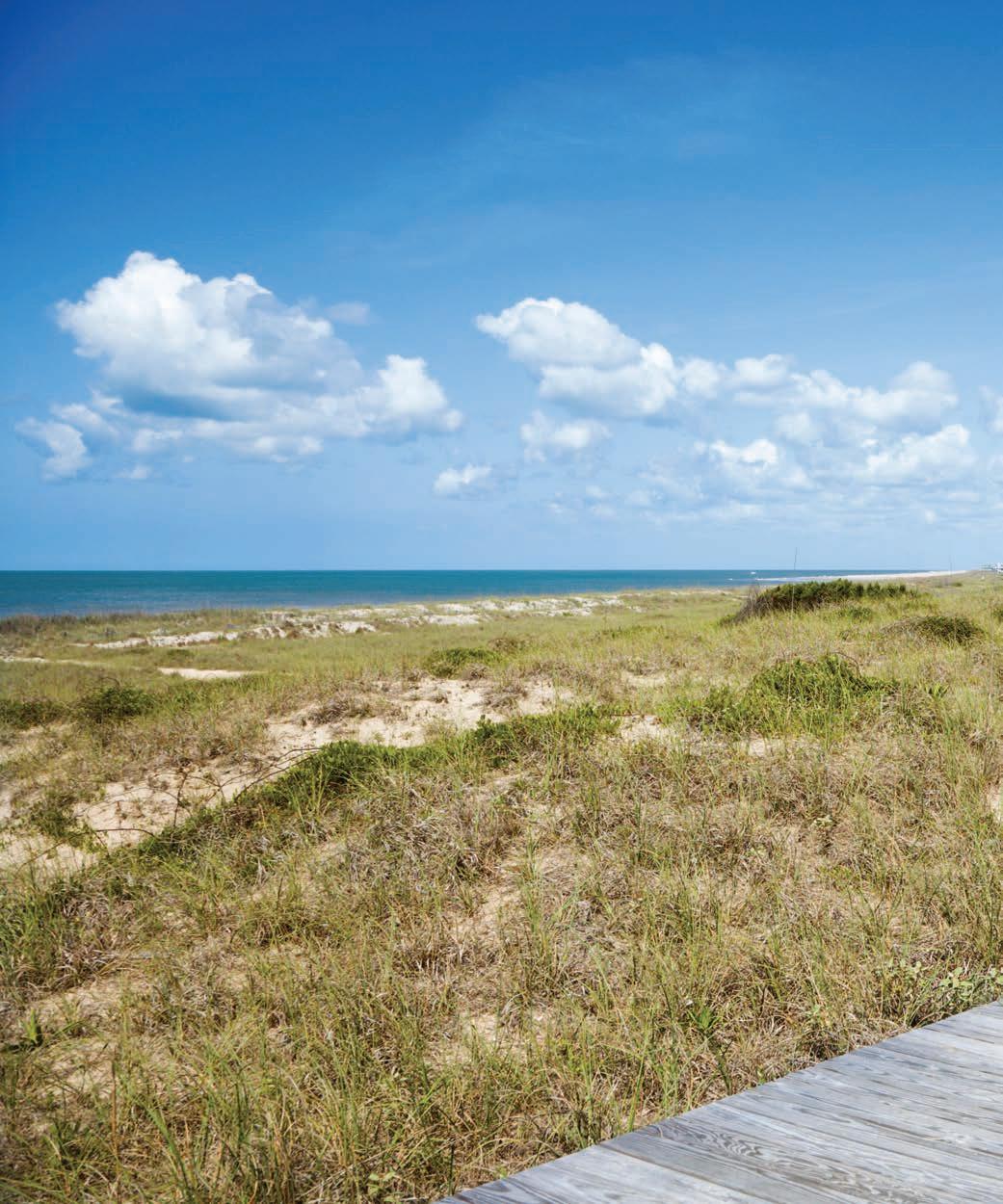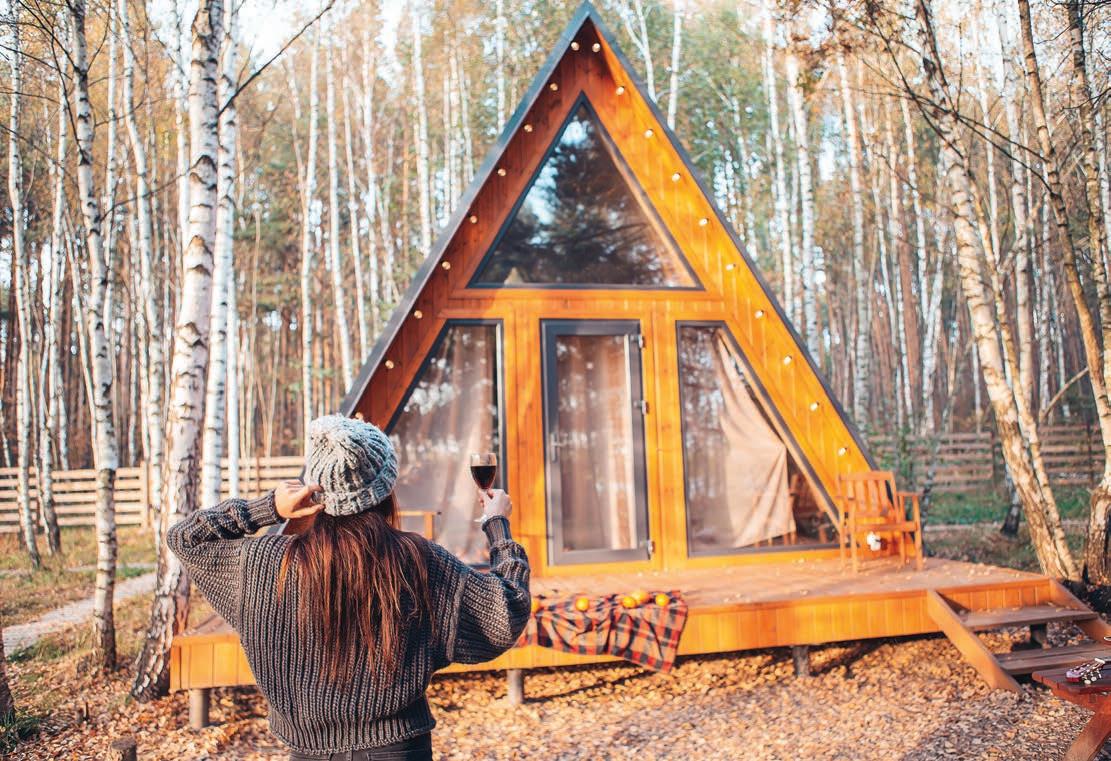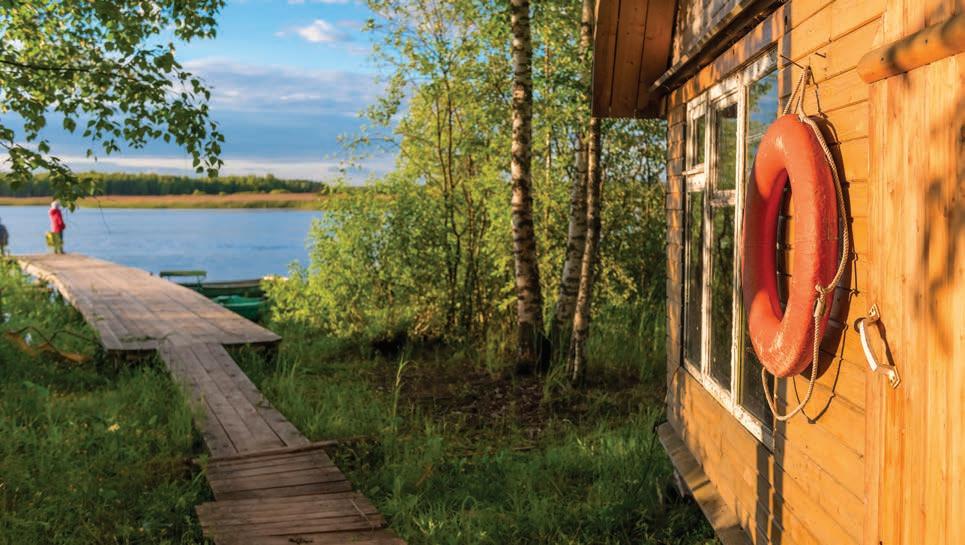
6 minute read
Second Home Buyer Trends
Location is the most important factor in the purchasing decision for second home owners (67%) and aspiring homeowners (70%) when buying a second home.
By Chrissy Bruchey
Sales of luxury second homes increased nearly 25% year-over-year during the second quarter of 2022 and approximately 235% compared to Q1 2020, prior to the pandemic intensifying in the U.S.* What’s motivating these second home buyers and more is captured in the 2022 Second Home Attitude Report — a quantitative survey-driven report conducted by Pacaso and Savanta, a trusted research firm. The report identifies trends around second homeowners and aspiring second homeowners’ preferences and gauges the factors considered when deciding to buy a second home. This report uses data from a July 2022 survey conducted online among more than 1,000 current and aspiring second homeowners with household incomes equivalent to or above $150,000 in the United States, United Kingdom and Canada. The findings shared in this report are specific to the U.S. “The newfound flexibility many Americans are afforded

iofoto ©/Adobe Stock
has made demand for second homeownership stronger than ever as people look to put quality of life frontand-center in their lifestyle,” said Pacaso CEO and CoFounder Austin Allison. “When you buy a second home, you’re unlocking a new chapter in life, becoming a part of the fabric of the community, and above all else, finding a special place to spend time with friends and family.” “Existing second homeowners have experienced firsthand the life enriching possibilities of second homeownership and thus we expect to have more realistic responses as they have a peak under the hood of how often they use their home as opposed to dreamers who haven’t yet seen their preferred usage,” said Allison. “Our data shows that only 29% of people plan to visit their second home, more than 7x per year. This stat further cements co-ownership as a more efficient and sustainable option, as buyers have the power to own only what they will use. Owning 100% of a home you barely use is wasteful and antiquated.”

Image licensed by Ingram Image
Location, Price, and Size Drive Second Home Buying Decision
For both existing second homeowners and aspiring second homeowners, location (67% vs. 70%), price (49% vs. 66%) and home size (44% vs. 48%) are the top three most important considerations in purchasing decisions for their families when buying a second home. Location, location, location! As the desire to own a second home grows, the role of location in the buying decision does as well with 67% of current second homeowners and 70% of aspiring second homeowners choosing location as their number one consideration when thinking about purchasing a second home. However, existing second homeowners (45%) tend to value the appeal of the neighborhood more than nonowners (30%). An inability to afford the second home they want is holding non-second homeowners (66%). Of the people who desire to own a second home but don’t already, four in ten (42%) show concern about the associated costs and more than one-third (35%) are hesitant about the effort to maintain a second home. Nearly half of all current (44%) and non-second homeowners (48%) consider the size of the property when buying their second home. Both value travel time and amenities as other important considerations.
“Maintaining a home at a luxury level with contemporary design, high-end furnishings and decor, top-notch amenities and appliances, regular cleaning and maintenance, comes at high cost and a large time commitment as to care for the home properly,” said Allison. “These buyers are still in the process of considering their lifestyle and how they plan to use their home, how often, and who will take care of it when they’re not there. There are options outside of traditional second homeownership, like co-ownership, that mitigate some ownership issues and provide better value.”
Second home dreamers and owners aren’t crazy about catching a plane to head to their second home but love a road trip. Nearly two-thirds of people (64%) commute or expect to commute to their second home in four hours or less and the majority (87%) want to drive. One exception is that current second homeowners are slightly more likely to have longer commutes than those intending to own a second home would expect, as 43% of existing
second homeowners commute more than four hours to their second home, while only 31% of intenders expect to travel more than four hours. Without major differences between owners versus non-owners, people overwhelmingly expect to drive to their second home (approaching nine in ten) than those who expect to fly (three in ten) or commute by train (one in ten).
How the pandemic changed the definition of second home destinations
The permanent shift toward work-from-home has forever changed the way people work and is giving second home buyers more flexibility to spend time away from their primary home and office. “Both existing second homeowners and aspiring owners prefer domestic second homes because they are more accessible, allowing them to visit more often. These owners and aspiring owners are attracted to a second home to share with their family and friends so they can live life to the fullest,” said Savanta Director Research, Insights and Consulting, Amit Sahni.
For second home dreamers, their second home is on the water
When asked about their desired location type for purchasing a second home, 61% of non-second homeowners want to be near the water. Non-second homeowners ranked a beach house (42%) at the top of their list, followed by lake (19%) and mountain (14%). 91% of existing second homeowners own domestically and 15% own internationally, which is in alignment with the desires of non-second homeowners. Non-owners and existing owners feel nearly the same about the number of trips they make and expect to make to their second home each year with only 29% of people planning to visit their second home more than six times per year. More than half (59%) of existing and intending owners visit and expect to visit their homes more than four times per year, with nearly a third (29%) visiting more than six times per year. Existing second homeowners (61%) are generally more likely to spend two or three plus weeks on vacation, while people who desire to own a second home are more likely to spend one week or less on vacation (58%). 65% of owners and buyers spend or expect to spend two or fewer weeks per stay. “People who intend to own a second home are daydreaming of a perfect place to run to for a quick escape or for occasional weekend getaways throughout the year,” said Allison. “Whereas people who are already second homeowners may be a bit more comfortable with working from their second home or going for two or more weeks at a time, but just less frequently.”
Methodology Pacaso commissioned market research firm Savanta on a quantitative online study aimed at understanding the second home attitudes and usage preferences of existing and non-second homeowners. The research was conducted in July 2022 amongst households with incomes equivalent to $150,000 or greater per year across the United States, United Kingdom and Canada. Data shared in this report reflects the analysis of median and average results excluding outliers. This report focuses on United States results.


